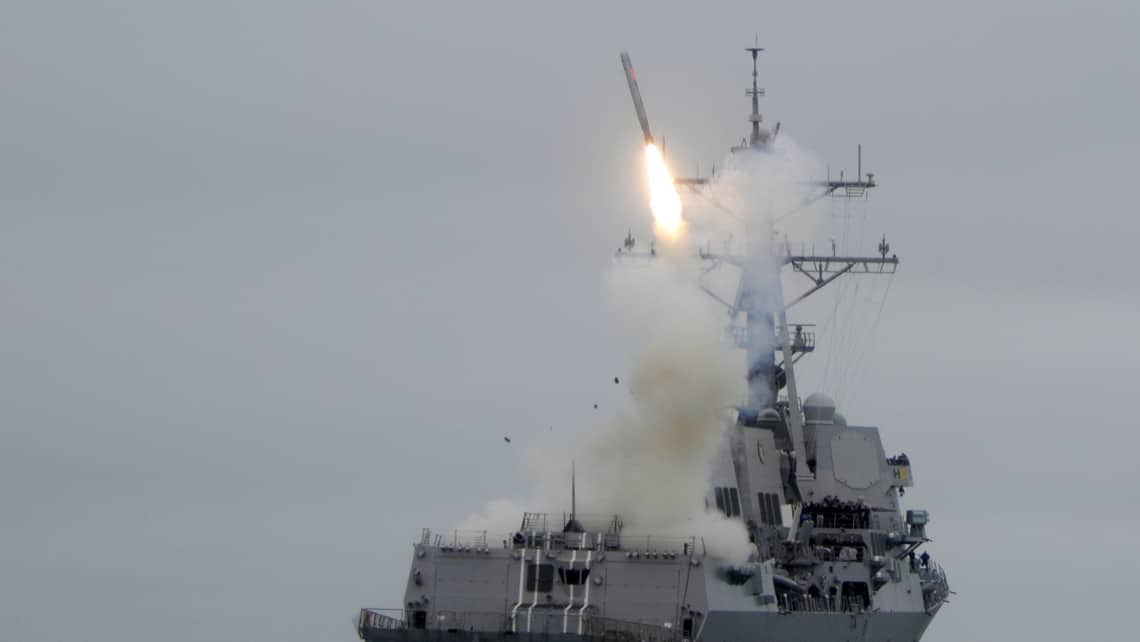The Navy’s bold new “distributed lethality” (DL) concept could dramatically change naval operations both in terms of geographic dispersion and armaments of individual ships. By decreasing emphasis on manned aircraft, DL would have significant implications for shipboard weaponry, especially in terms of defensive and offensive missiles as well as payload structure. The concept has already garnered serious attention, but questions remain about its practical implications and near-term implementation.
A shift away from carrier groups to smaller, heavily armed “surface action groups” has several drivers, especially the challenges posed by anti-access/area-denial threats. The primacy of carrier aviation encourages adversaries to target carriers; reducing reliance on them presents an adversary with more targets, but it incurs new risks.
With increased dispersion comes increased demand for individual ship defenses, including air defenses and antiship missiles. Regional missile defense missions, and thus SM-3 missiles, may also become less concentrated and more distributed across the fleet. One way to boost interceptors without ships is to put more defensive missiles on land, but in principle a Navy-operated land-based Vertical Launching System (VLS) could hold offensive strike capabilities.
DL would also mean more offensive missiles. Writing in Proceedings, three senior surface warfare officers recommend two new types of medium-range missiles that could be dropped into the VLS or “bolted” onto virtually any ship in the fleet. A good portion of the fleet could become missile carriers.
It remains to be seen if the Navy will buy the quantity of armaments the concept suggests, but the sheer number of missile tubes required will itself be a challenge. Replacing Ohio-class guided-missile submarines (SSGNs) by 2028 would be quite costly, but their retirement will mean a net reduction of some 600 missile cells. There are several ways to meet this shortfall: Virginia Payload Modules, with 28 additional cells; Towed Payload Modules, trailers with lots of tubes; and enhanced at-sea reloading. Other solutions include packs of missiles in semiautonomous unmanned undersea vehicles or prepositioning on the seafloor.
Creating multi-mission flexibility in the missiles themselves may be one way to take greater advantage of scarce tubes. Tomahawk is one example of such flexibility. Another is SM-6, currently used for cruise missile defense, which will soon be tested for terminal ballistic missile defense. With different payloads, the SM-6 might evolve to land-attack or antiship missions.
Although the implications of distributed lethality are not yet fully understood, one thing seems clear: there are going to be a lot of missiles involved.
